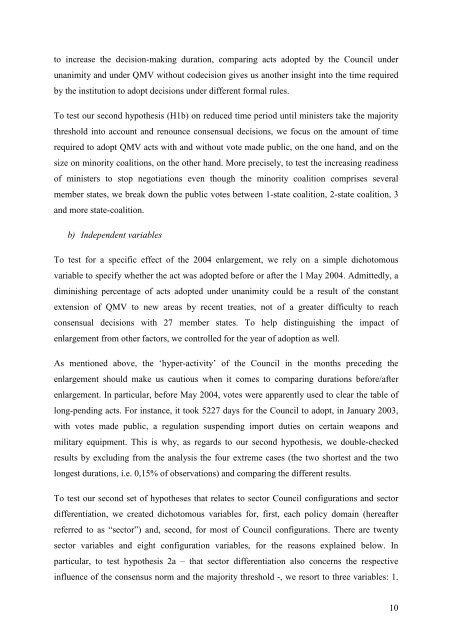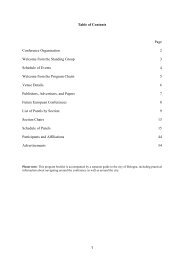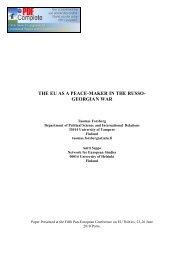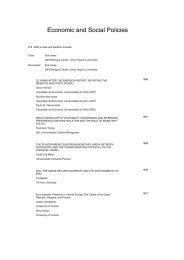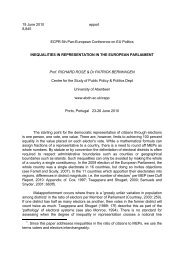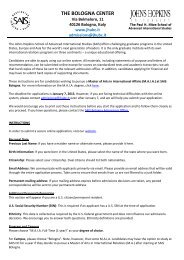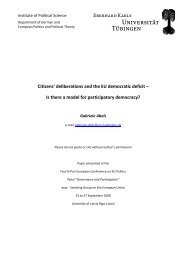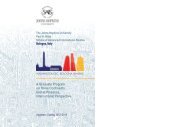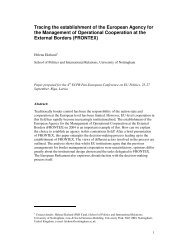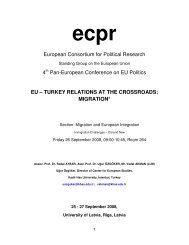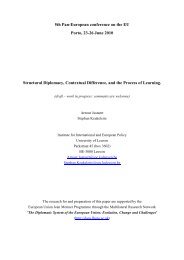Decision-Making in the Enlarged EU Council of Ministers: A Softer ...
Decision-Making in the Enlarged EU Council of Ministers: A Softer ...
Decision-Making in the Enlarged EU Council of Ministers: A Softer ...
Create successful ePaper yourself
Turn your PDF publications into a flip-book with our unique Google optimized e-Paper software.
to <strong>in</strong>crease <strong>the</strong> decision-mak<strong>in</strong>g duration, compar<strong>in</strong>g acts adopted by <strong>the</strong> <strong>Council</strong> under<br />
unanimity and under QMV without codecision gives us ano<strong>the</strong>r <strong>in</strong>sight <strong>in</strong>to <strong>the</strong> time required<br />
by <strong>the</strong> <strong>in</strong>stitution to adopt decisions under different formal rules.<br />
To test our second hypo<strong>the</strong>sis (H1b) on reduced time period until m<strong>in</strong>isters take <strong>the</strong> majority<br />
threshold <strong>in</strong>to account and renounce consensual decisions, we focus on <strong>the</strong> amount <strong>of</strong> time<br />
required to adopt QMV acts with and without vote made public, on <strong>the</strong> one hand, and on <strong>the</strong><br />
size on m<strong>in</strong>ority coalitions, on <strong>the</strong> o<strong>the</strong>r hand. More precisely, to test <strong>the</strong> <strong>in</strong>creas<strong>in</strong>g read<strong>in</strong>ess<br />
<strong>of</strong> m<strong>in</strong>isters to stop negotiations even though <strong>the</strong> m<strong>in</strong>ority coalition comprises several<br />
member states, we break down <strong>the</strong> public votes between 1-state coalition, 2-state coalition, 3<br />
and more state-coalition.<br />
b) Independent variables<br />
To test for a specific effect <strong>of</strong> <strong>the</strong> 2004 enlargement, we rely on a simple dichotomous<br />
variable to specify whe<strong>the</strong>r <strong>the</strong> act was adopted before or after <strong>the</strong> 1 May 2004. Admittedly, a<br />
dim<strong>in</strong>ish<strong>in</strong>g percentage <strong>of</strong> acts adopted under unanimity could be a result <strong>of</strong> <strong>the</strong> constant<br />
extension <strong>of</strong> QMV to new areas by recent treaties, not <strong>of</strong> a greater difficulty to reach<br />
consensual decisions with 27 member states. To help dist<strong>in</strong>guish<strong>in</strong>g <strong>the</strong> impact <strong>of</strong><br />
enlargement from o<strong>the</strong>r factors, we controlled for <strong>the</strong> year <strong>of</strong> adoption as well.<br />
As mentioned above, <strong>the</strong> ‘hyper-activity’ <strong>of</strong> <strong>the</strong> <strong>Council</strong> <strong>in</strong> <strong>the</strong> months preced<strong>in</strong>g <strong>the</strong><br />
enlargement should make us cautious when it comes to compar<strong>in</strong>g durations before/after<br />
enlargement. In particular, before May 2004, votes were apparently used to clear <strong>the</strong> table <strong>of</strong><br />
long-pend<strong>in</strong>g acts. For <strong>in</strong>stance, it took 5227 days for <strong>the</strong> <strong>Council</strong> to adopt, <strong>in</strong> January 2003,<br />
with votes made public, a regulation suspend<strong>in</strong>g import duties on certa<strong>in</strong> weapons and<br />
military equipment. This is why, as regards to our second hypo<strong>the</strong>sis, we double-checked<br />
results by exclud<strong>in</strong>g from <strong>the</strong> analysis <strong>the</strong> four extreme cases (<strong>the</strong> two shortest and <strong>the</strong> two<br />
longest durations, i.e. 0,15% <strong>of</strong> observations) and compar<strong>in</strong>g <strong>the</strong> different results.<br />
To test our second set <strong>of</strong> hypo<strong>the</strong>ses that relates to sector <strong>Council</strong> configurations and sector<br />
differentiation, we created dichotomous variables for, first, each policy doma<strong>in</strong> (hereafter<br />
referred to as “sector”) and, second, for most <strong>of</strong> <strong>Council</strong> configurations. There are twenty<br />
sector variables and eight configuration variables, for <strong>the</strong> reasons expla<strong>in</strong>ed below. In<br />
particular, to test hypo<strong>the</strong>sis 2a – that sector differentiation also concerns <strong>the</strong> respective<br />
<strong>in</strong>fluence <strong>of</strong> <strong>the</strong> consensus norm and <strong>the</strong> majority threshold -, we resort to three variables: 1.<br />
10


